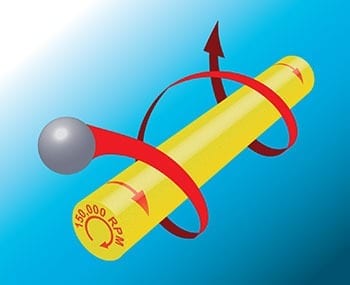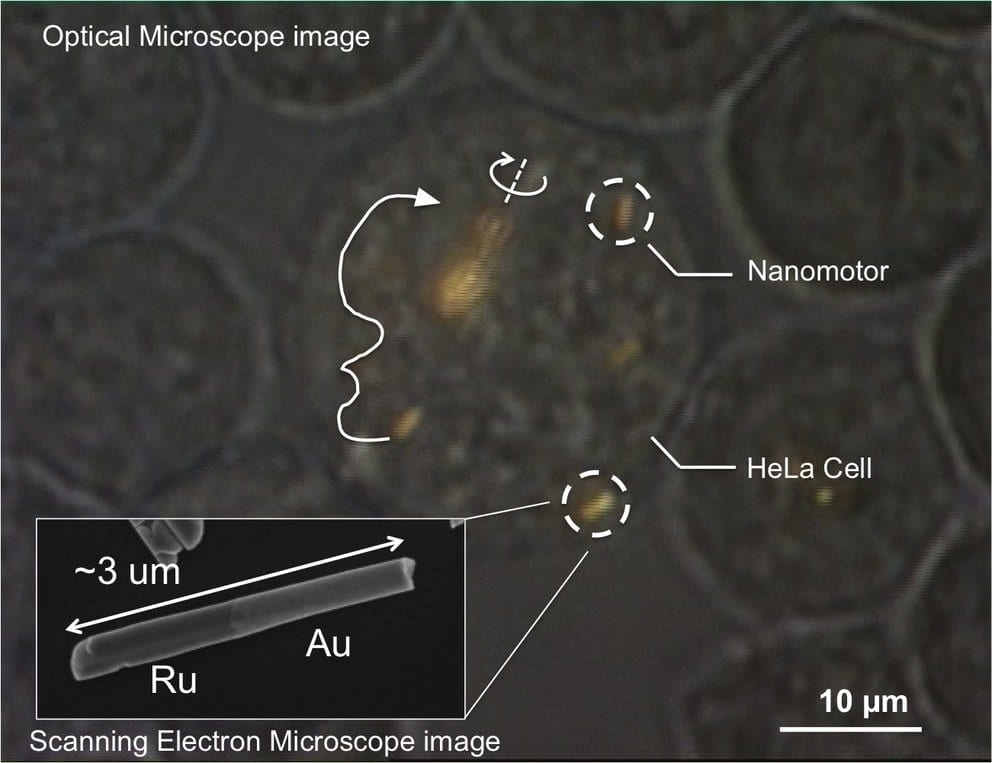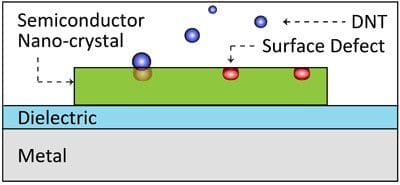Vibrate a solution of rod-shaped metal nanoparticles in water with ultrasound and they’ll spin around their long axes like tiny drill bits.
Why? No one yet knows exactly. But researchers at the National Institute of Standards and Technology (NIST) have clocked their speed—and it’s fast. At up to 150,000 revolutions per minute, these nanomotors rotate 10 times faster than any nanoscale object submerged in liquid ever reported.
The discovery of this dizzying rate has opened up the possibility that they could be used not only for moving around inside the body—the impetus for the research—but also for high-speed machining and mixing.
Scientists have been studying how to make nanomotors move around in liquids for the past several years. A group at Penn State looking for a biologically friendly way to propel nanomotors first observed that metal nanorods were moving and rotating in response to ultrasound in 2012. Another group at the University of California San Diego then directed the metal rods’ forward motion using a magnetic field. The Penn State group then demonstrated that these nanomotors could be propelled inside of a cancer cell.
But no one knew why or how fast the nanomotors were spinning. The latter being a measurement problem, researchers at NIST worked with the Penn State group to solve it.
“If nanomotors are to be used in a biological environment, then it is important to understand how they interact with the liquid and objects around them,” says NIST project leader Samuel Stavis. “We used nanoparticles to trace the flow of water around the nanomotors, and we used that measurement to infer their rate of rotation. We found that the nanomotors were spinning surprisingly rapidly.”
Read more . . .
The Latest on: Nanomotors
[google_news title=”” keyword=”Nanomotors” num_posts=”10″ blurb_length=”0″ show_thumb=”left”]
via Google News
The Latest on: Nanomotors
- Nanomotors: Tiny Engines Powering the Future of Nanotechnologyon April 9, 2024 at 11:30 am
Nanomotors are tiny machines that can convert various forms of energy into motion at the nanoscale. These miniaturized engines, typically ranging in size from a few nanometers to several micrometers, ...
- Chemical Nanomotorson March 31, 2024 at 5:00 pm
Join us in commemorating two decades of groundbreaking innovation since the debut of "Catalytic Nanomotors" in the Journal of the American Chemical Society (JACS) in 2004. This symposium focuses on ...
- Nanomotors Are Controlled, for the First Time, Inside Living Cells (IMAGE)on June 15, 2022 at 12:21 am
Optical microscope image of a HeLa cell containing several gold-ruthenium nanomotors. Arrows indicate the trajectories of the nanomotors, and the solid white line shows propulsion. Near the center ...
- Nanopores, nanomotors, negative refraction...on December 14, 2021 at 6:59 am
High-surface-area materials such as porous carbon, polymers and metal–organic frameworks have high hydrogen storage capabilities at cryogenic temperature. The small hydrogen adsorption ...
- Apo-Si: a gene delivery platformon September 12, 2020 at 11:47 pm
Aposense develops first-in-class Molecular NanoMotors (MNMs) (Fig. 1a), which are novel small chemical entities (MW: ~800 Da) capable of ‘energy mining’ from the intramembrane electric field.
- What are nanobots?on April 3, 2019 at 9:28 am
The field of nanorobotics brings together several disciplines, including nanofabrication processes used for producing nanomotors, nanoactuators, nanosensors, and physical modeling at nanoscales.
via Bing News











